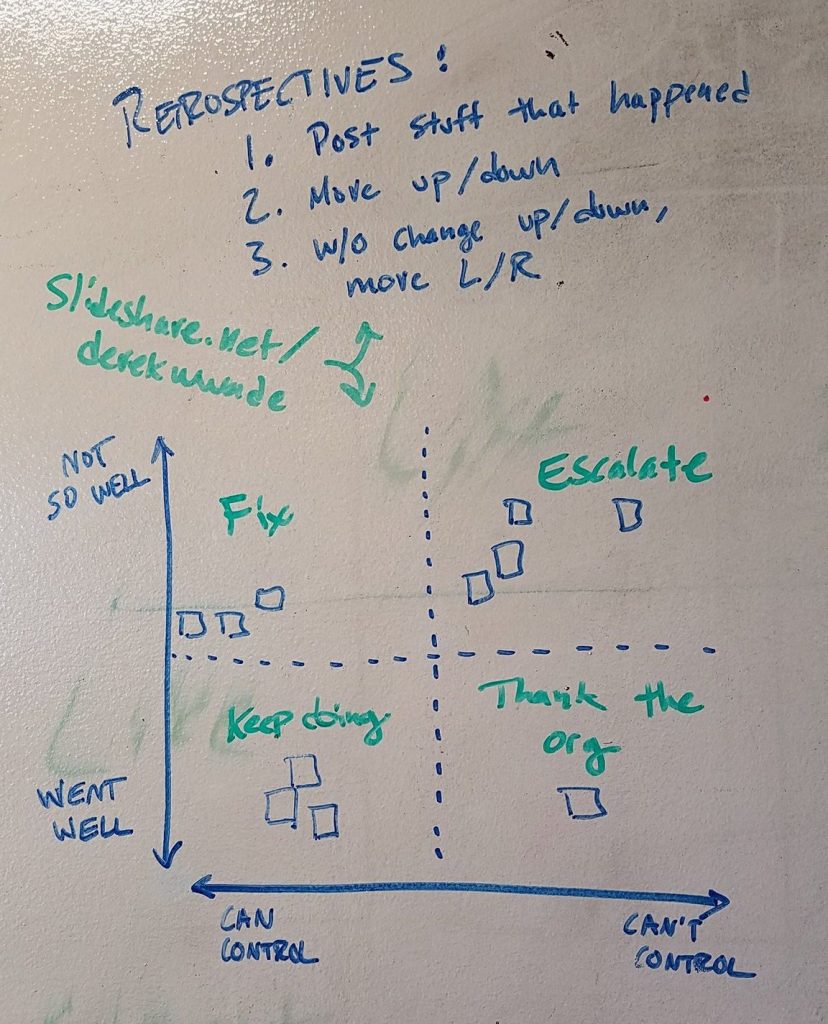
Things they can’t control and hold them back… Escalate. Inform mgmt, coaches, etc.
How to facilitate this: https://www.slideshare.net/derekwwade/team-coursesprint-retrospective-module
Found this information on Twitter: https://twitter.com/DerekWWade/status/992842247895945216
